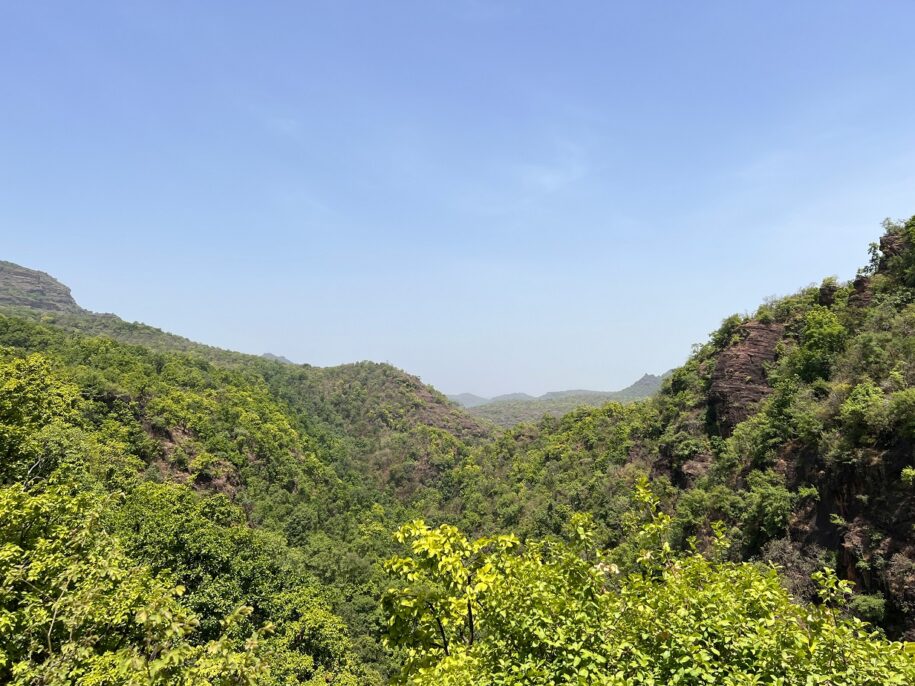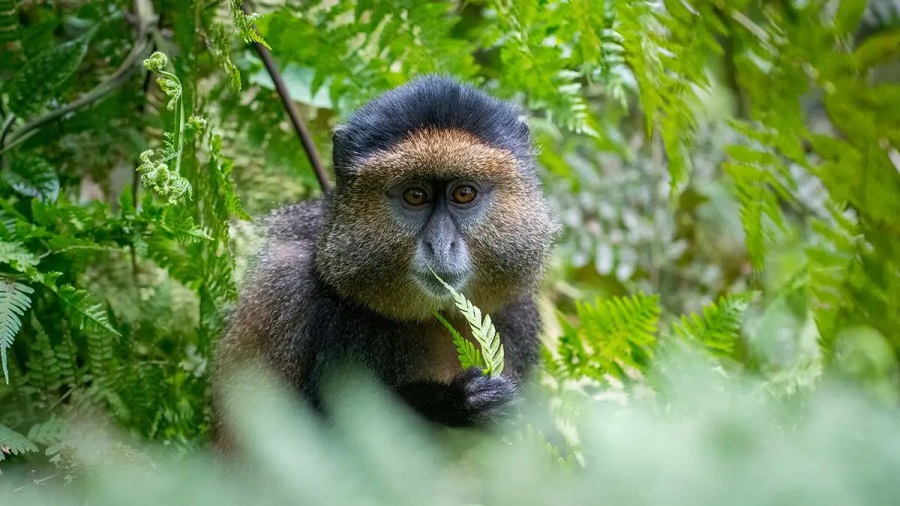Gishwati Mukura National Park
Gishwati Mukura National Park is Rwanda’s newest national park, following Volcanoes, Nyungwe Forest, and Akagera National Park, which is located in the biodiversity of the Albertine Rift Valley in the western part of the country, and in size it covers a total of 34 square kilometers. The National Park is divided into two magnificent rainforests that is Gishwati being the largest and Mukura Forest as the smallest.
History and Formation:
Gishwati Forest: Historically, Gishwati was part of a vast, interconnected rainforest system stretching across the Albertine Rift, linking with Nyungwe Forest National Park to the south and extending west towards the Congo. By the 1970s, it still held significant forest cover. However, the 1994 Rwandan Genocide and subsequent return of refugees led to widespread deforestation as people sought shelter and land for agriculture. By 2001, the forest had shrunk dramatically, losing over 90% of its original size.
Mukura Forest: Mukura was designated a forest reserve in 1951, originally covering a larger area of around 30,000 hectares. It too experienced significant deforestation over the years due to population pressure and the need for resources, reducing its size to approximately 16,000 hectares.
Establishment of the National Park (2015): Recognizing the critical biodiversity and the need for landscape restoration, the Rwandan government merged the remnants of the Gishwati and Mukura forests to form the Gishwati-Mukura National Park. This aimed to enhance conservation efforts, improve soil fertility, stabilize slopes, regulate water flow, and boost the livelihoods of surrounding communities through ecotourism. The park was officially gazetted in February 2016, and tourism activities commenced in 2019.
Hiking within the forest park
Hiking through Gishwati forest is a memorable adventure experience, as hills surround the jungle and a cool climate that is really cozy, situated in areas with high rainfall. In conclusion, therefore, Gishwati Forest is Rwanda’s best example of an ecotourism destination because of its unique, diverse flora and fauna.
Gishwati-Mukura National Park, Rwanda’s fourth and newest national park, established in 2015, represents a significant step in the country’s commitment to conservation and ecotourism. This park is unique as it comprises two distinct, yet ecologically linked, forest reserves: Gishwati and Mukura.
Location and Size
Gishwati Mukura National Park is located in the western province of Rwanda, stretching across Rutsiro and Ngororero districts.
The park covers a total area of approximately 34 square kilometers (around 13.2 square miles), with Gishwati covering about 15 sq. km and Mukura covering around 19 sq. km. An additional buffer zone of about 9.62 square kilometers surrounds the core forest areas.
The park sits on a ridge that divides the Congo and Nile water catchment areas, within the Albertine Rift, a region of exceptional biodiversity.
Its altitude is characterized by a mountainous landscape ranging from 2000-3000 meters above sea level
Biodiversity
Gishwati-Mukura National Park, despite its relatively small size and past degradation, remains a significant biodiversity hotspot within the Albertine Rift.
Flora: The park boasts over 60 species of trees and shrubs, including indigenous hardwoods and bamboo. Dominant tree species include Macaranga kilimandscharica, and regenerating areas show species like Carapa grandiflora, Entandrophragma excelsum, and Symphonia globulifera. Other notable flora includes giant tree ferns and various orchids.
Fauna
Primates: The park is a crucial habitat for several primate species, including a community of around 20 Eastern chimpanzees, which are listed as threatened. Other primates include the Albertine Rift endemic golden monkey (endangered), L’Hoest’s monkey (vulnerable), blue monkey, and black and white colobus monkey. Baboons and vervet monkeys are also present.
Other Mammals: While populations were significantly impacted by deforestation, the park is home to species like the serval cat, side-striped jackal, black-fronted duiker, tree hyraxes, genets, mongoose, civets, and various smaller mammals.
Birds: Gishwati-Mukura is a significant birding destination, with over 232 bird species recorded in Gishwati and 163 in Mukura. This includes a high number of Albertine Rift endemics (around 42 species for the broader area, with 17 found in Gishwati and 14 in Mukura). Notable species include the grey crowned crane, martial eagle, mountain yellow warbler, purple-breasted sunbird, red-throated alethe, regal sunbird, Ruwenzori batis, and Ruwenzori turaco.
Herpetofauna: Surveys have revealed a relatively high diversity of amphibians for the park’s size, with 13 species in Gishwati and 10 in Mukura, including several Albertine Rift endemics like Xenopus wittei, Xenopus vestitus, Leptopelis kivuensis, and Leptopelis karissimbensis. Six reptile species were found in Gishwati and five in Mukura, including the endemic Great Lakes bush viper.
Insects: The park supports a variety of butterflies and other insects, contributing to the ecosystem’s complexity.
Tourist Activities carried out at Gishwati Mukura NP
Since opening to tourism in 2019, Gishwati-Mukura National Park visitors engage in several activities; these include the following.
Chimpanzee Tracking: Guided treks to observe the resident chimpanzee community in their natural habitat. However, there are other best chimpanzee destinations, including Nyungwe National Park and Kibale National Park in Uganda
Golden Monkey Tracking: Opportunities to see the endangered golden monkeys, known for their playful nature and vibrant fur.
Guided Nature Walks and Hiking: Explore the forest on foot. Discover its diverse flora and fauna, including primates, birds, and unique plant life. Several trails offer varying lengths and difficulty levels, leading to scenic waterfalls. Night walks are also sometimes organized to observe nocturnal animals.
Bird Watching: With its rich avian diversity, the park is a paradise for birdwatchers, offering chances to spot numerous Albertine Rift endemics and forest specialists.
Community-Based Tourism: This involves engaging with local communities through cultural performances (traditional dances, songs, and storytelling). Visits to local farms, learning about traditional healing practices, and exploring local art and handicrafts.
Biking/Cycling: The Congo Nile Trail passes near the park, offering opportunities for cycling adventures in the surrounding landscapes.
Conservation Efforts and Significance:
Gishwati-Mukura National Park is a testament to Rwanda’s commitment to conservation and restoration. Significant efforts are underway:
Reforestation and Habitat Restoration: Extensive projects aim to increase forest cover using native tree species and create corridors to connect the fragmented forests, enhancing habitat for wildlife.
Anti-Poaching Measures: Protecting the park’s vulnerable wildlife populations through patrols and law enforcement.
Community Involvement: Engaging local communities in conservation efforts through education, providing alternative livelihoods (like beekeeping, ecotourism, and sustainable agriculture), and ensuring they benefit from tourism revenue (a percentage of park revenue goes to community development projects). This helps reduce human-wildlife conflict and fosters a sense of ownership.
- Research and Monitoring: Ongoing scientific research helps understand the park’s biodiversity, monitor the health of ecosystems and wildlife populations, and inform conservation strategies.
- UNESCO Biosphere Reserve: In 2020, the Gishwati-Mukura landscape was designated a UNESCO Biosphere Reserve, recognizing its global ecological significance and the ongoing efforts to balance conservation with sustainable development and community involvement.
Accessibility and Accommodation:
- The park is accessible by road, approximately a 2-3 hour drive from Kigali. It’s also relatively close to other major tourist destinations like Volcanoes National Park and Lake Kivu.
- Accommodation options within the park are currently limited, with Gishwati Lodge being a luxury option. However, visitors can also find a range of lodges and hotels in nearby areas like Rubavu and near Volcanoes National Park.
Conclusion
Gishwati-Mukura National Park represents a remarkable story of ecological degradation and hopeful restoration.
It offers a unique and intimate experience of Rwanda’s biodiversity, particularly its primates and birdlife. while highlighting the crucial role of conservation efforts and community engagement in protecting the vital Albertine Rift ecosystem.


